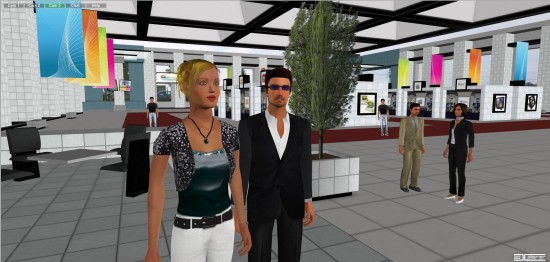Since we launched Altadyn nine years ago, we regularly hear the questions: Why should virtual events look like in-person events? Why meet in a 3D space? Why use an avatar? Why isn’t the virtual events interface as simple as buying a book on Amazon or renting a movie on Netflix?
We see a few reasons why virtual events do need to look like in-person events if they want to become mainstream:
- A 3D immersive environment creates a sense of presence.
- Avatars lead to deeper, more engaging interactions and allow more networking among attendees
- Visiting a virtual space with an avatar creates a stronger visual memory of the meeting
- Importing 3D objects improves communication and collaboration

Have you ever questioned why corporations have always spent so much time and money in building well-designed and architected headquarters and reception areas? Do you have the same feeling when you walk in an underground dark railway station hallway, as when walking in a bright glass bridge with a green landscape around your meeting room?
Connecting attendees into a virtual event, so that they can see slides, hear a presenter, watch a live or pre-recorded video, or even chat to each other, has been possible for over a decade, thanks to WebEx and similar platforms. So why do people still often prefer in-person events?
There are still book buyers who get in their cars and drive to to Barnes & Noble to buy a book — a process that takes more time, and often more money, than ordering online.
These meeting attendees, and these book buyers, want more human interaction, more engagement.
Virtual events which are produced in a 3D immersive environment like 3DXplorer, are closer to in-person events than to WebEx events in the level of interaction and engagement they offer. Attendees actually feel that they are there, interacting with exhibitors and other attendees.
For virtual event attendees, the human aspects are even more critical than for book shoppers.
In a platform like 3DXplorer, you can virtually walk on the same floor as other attendees, shake hand with each other, use laser pointers to point to slides or show objects to others. You can see where other people are looking. You feel that you are there with them, that you are present in the same space.
Virtual meeting vendors like WebEx haven’t gained nearly the same degree of market penetration as, say, Amazon has in the book business. By far the greatest number of meetings and events still haven’t gone virtual, despite over a decade of technological progress.
The reason is that platforms like WebEx can’t provide a feeling of presence, and they simply don’t facilitate networking and engagement that is effective or fun.
If the virtual events industry is to deliver on its growth promises, it will need to deliver products that are fundamentally different than WebEx and provide the level of presence and engagement that is only possible in immersive 3D.
(This column is an edited version of one that originally appeared at the 3DXplorer company blog, and is printed here with permission.)
- Ten Challenges 3D Virtual Meeting Platforms Face in Corporations - March 7, 2011
- Why should virtual events look like in-person events? - February 3, 2011
